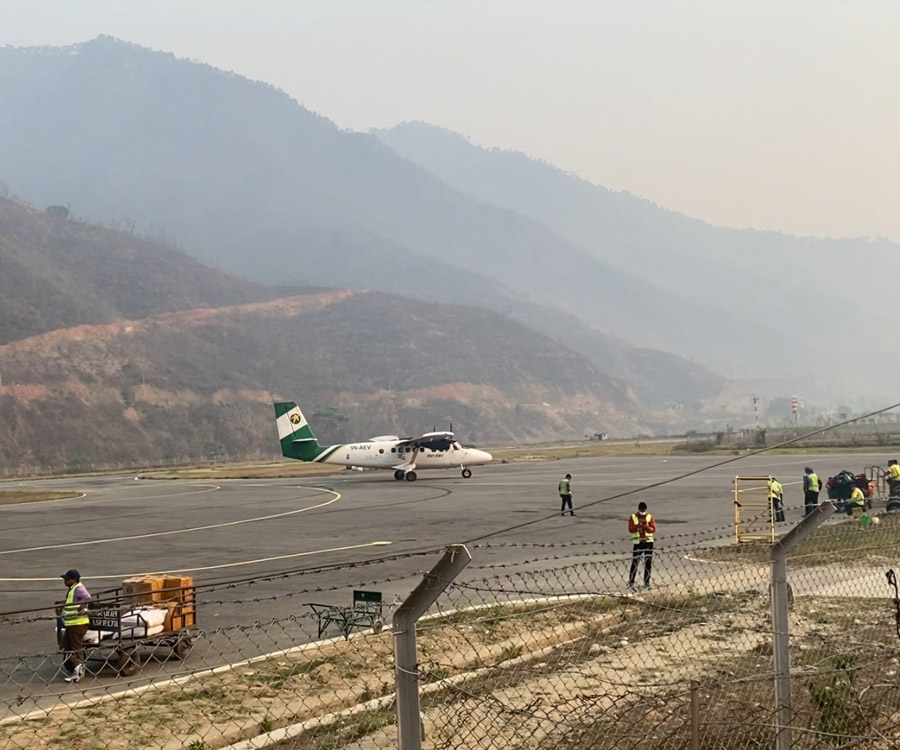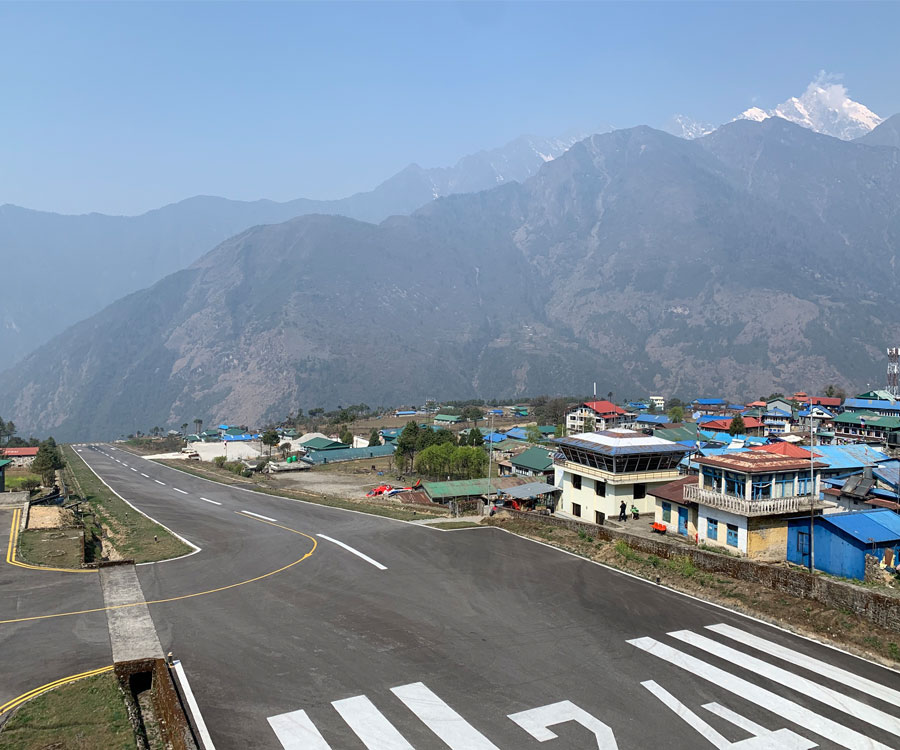- +977 9851074270
- info@mountainramadventures.com
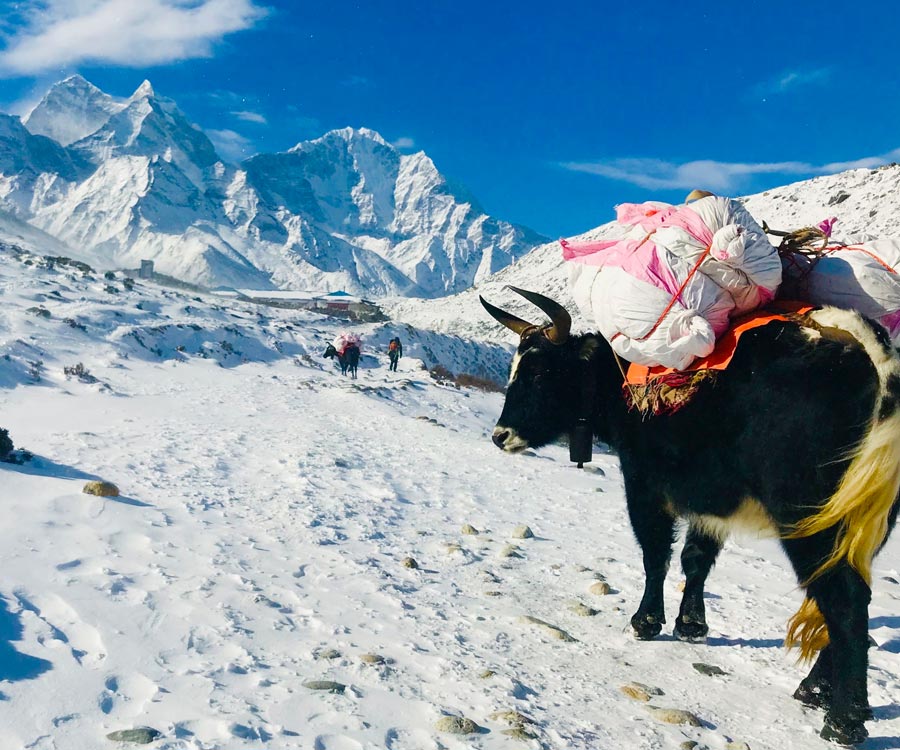
Everest Base Camp is located at a very high altitude (5,364 m/17,598 ft). Trekking here requires travelers to go via diverse climatic zones, hence, they come across varying terrain, vegetation, weather, and temperature. Technically, you can trek to Everest Base Camp throughout the year. However, every season has its own charm and slightly different difficulty level.
Even though the Everest Base Camp trek is considered moderate, the difficulty level may be high in some seasons because of additional weather challenges. So, your understanding of Everest Base Camp weather matters a lot for a satisfying experience. In this blog, you will learn what to expect during the Everest Base Camp trek in various seasons.
We have mapped this blog in a way to provide you with all the information regarding the Everest Base Camp trek in different seasons, the best time, trail conditions, views, crowds, alternative trekking options, and ways to save money. Nevertheless, whatever season you choose to do the Everest Base Camp trek, it will be a life-changing voyage.
When to visit the Everest Base Camp in Nepal?
The answer to this question depends on how you want to visit the Everest Base Camp. There are options for trekking and a helicopter tour. Likewise, you can also combine trekking with helicopter flight.
The best time to trek to Everest Base Camp is spring and autumn. Whereas, you can do the helicopter tour to Everest Base Camp throughout the year. If the weather is good, you can go on a helicopter tour no matter the season.
Everest Base Camp trek in different seasons
Nepal has four seasons- spring, summer/monsoon, autumn, and winter. Regardless of the season, the Himalayas are cold throughout the year, above 2,500 m to 3,000 m. However, the lower section of the Himalayas sees different weather patterns. 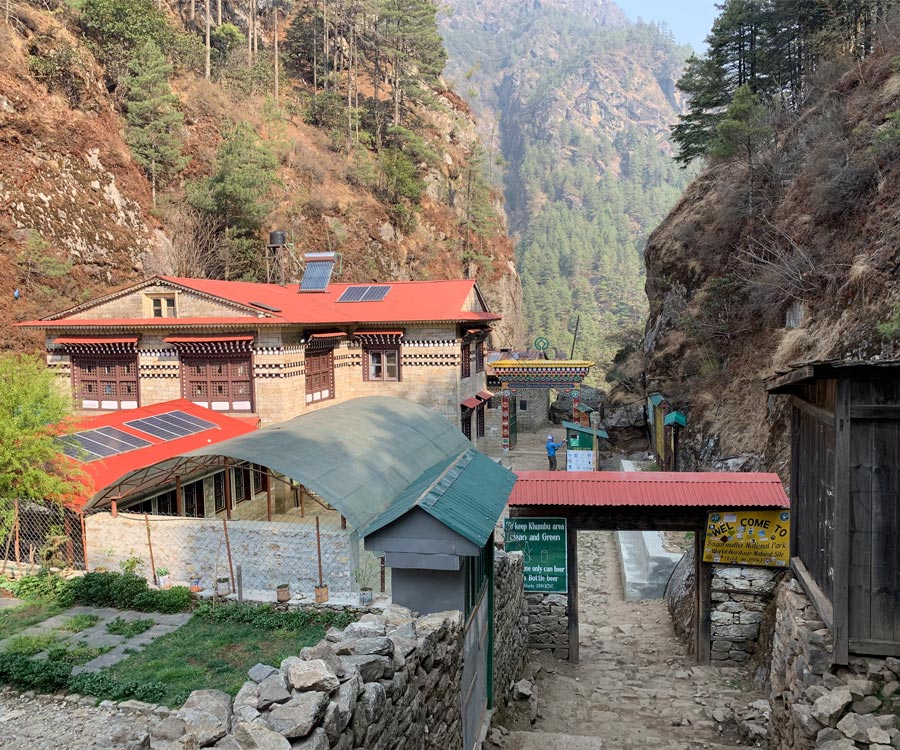
Every season can be well experienced in the lower elevations where all the trek starts, including EBC. Therefore, even a minor change in the weather may affect the trails. In the case of the Everest Base Camp trek, the Lukla flights are affected the most.
So, trekkers have to choose the right time to avoid any delays if they are bound by time. However, if you can keep 1-2 days aside in case of any flight delays or cancellations, you can do an EBC trek in the off-season, too.
From the starting point of the Everest Base Camp trek route to the highest point, you will face different temperatures, weather, terrain, and ecosystems. In general, the daytime is warmer than mornings and nights. Below, we have briefed more in detail about the EBC trek in different seasons:
Everest Base Camp trek in spring (March, April, May)
Spring is one of the best times of the year to trek in Nepal in general. This season has the finest weather and climate conditions. The highlight of the spring season is rhododendron blossoms that cover the entire lower sections of the trekking route, including Everest Base Camp. It makes landscapes very pretty.
In March, the Khumbu region starts to warm up. Rivers, streams, and waterfalls come back to life. All the lodges are open throughout the region. New leaves and flowers begin to bloom all over the trekking route, making the surrounding lush green. There could be some occasional rainfall or snowfall, but it only indicates the season is transitioning. 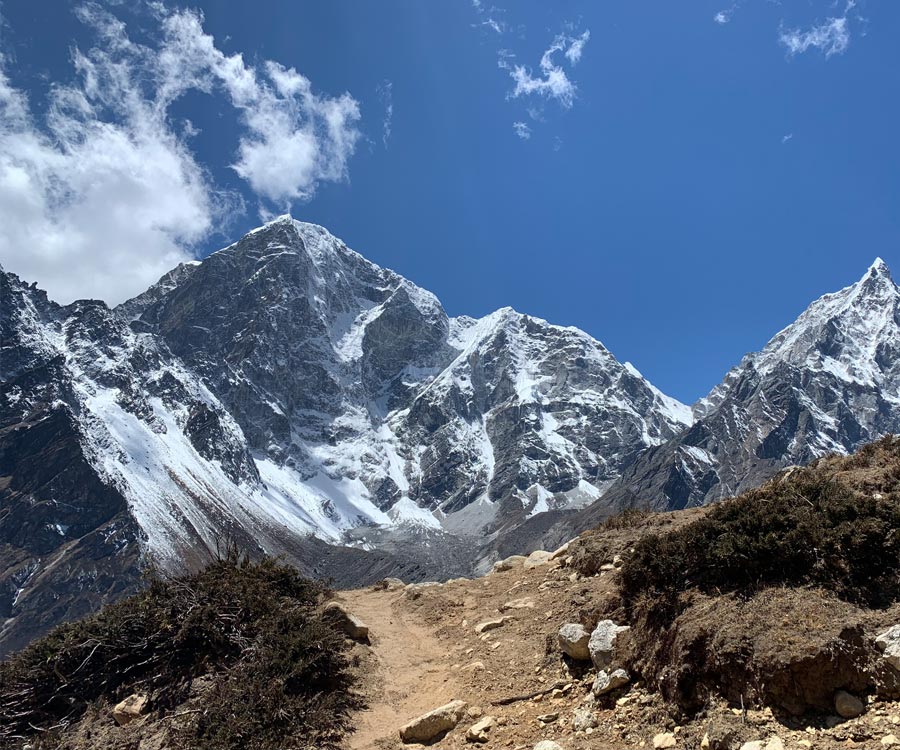
By April, the greenery and flower blossoms are at their full capacity. Hundreds of trekkers are already in the Khumbu region, and most of them trek towards Everest Base Camp. The environment is bustling and joyful. The weather remains stable, with a clear sky and excellent mountain views.
As May hits, mountaineers begin to enter the region. Gradually, the trail gets empty as trekkers return to Kathmandu. The crowd gets light, and by the end of May, you will mostly meet climbers. Overall, the temperature ranges from -10°C to 20°C. It is neither too hot nor too cold. So, you can complete the Everest Base Camp trek with a few warm pieces.
The days are beautiful. Likewise, the Lukla flights are mostly on time. As the Everest Base Camp trek route sees a huge number of trekkers in spring, it is better to join an organized trek instead of trekking alone.
Everest Base Camp trek in summer/monsoon (June, July, August)
Summer/monsoon welcomes the hottest and most humid time of the year. It is one of the not favorable times for Everest Base Camp trekking. Lukla flights see constant delays and cancellations, and the scorching heat makes walking 6 hours a day very challenging until you are below 2,500 meters. Even above 2,500 meters, the daytime is very hot.
There could be some travelers in the Everest region in early June, but as the days pass by, the region gets empty. Because of unstable weather and poor trail conditions, trekkers rarely visit the Khumbu region in the summer/monsoon season. By the end of June, the region starts to see heavy rainfall.
In July and August, frequent rainfalls ruin the trekking routes. It is slippery, muddy, and packed with bugs and leeches. On the other hand, the waterfalls, rivers, and streams are gushing with water because of rain. The greenery is also at its best. If you love to study vegetation, then this is the best time of the year to traverse the Khumbu region. 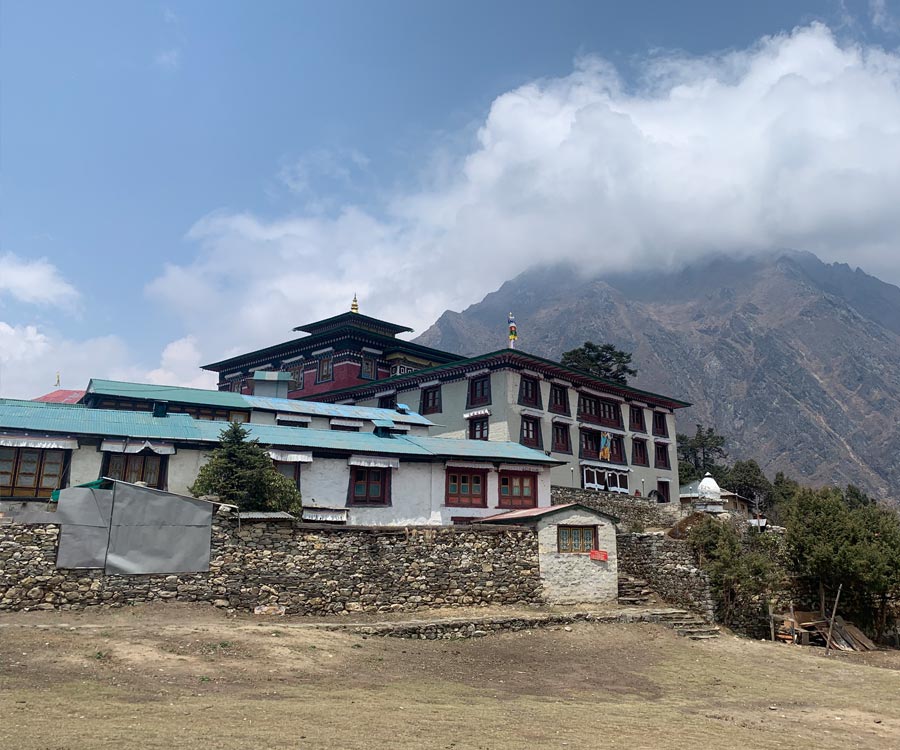
Because the trails are mostly empty, the cost of lodges and food also decreases in the summer/monsoon season. You will even get a discount on Lukla flights. Trekkers can enjoy tranquility as the trails are not crowded. The temperature ranges between 5°C to 25°C and may go above. The mountain views may be obstructed because of cloudy/gloomy weather.
Everest Base Camp trek in autumn (September, October, November)
Autumn is the start of another great time of the year for the Everest Base Camp trek. Tourists begin to flock to the Everet region to explore its beauty. The weather stabilizes, and the mountain views are crystal clear once again. Thanks to the rainfall, the air is clean. The humidity level decreases, and the days are again bright.
There can be occasional rainfall till mid-September. However, these are mostly transitional rainfalls. By the end of September, the Everest hiking routes come into good condition. As October starts, the longest daylight hours begin. In October, trekkers get almost 12 hours of daylight. The forests and trees begin to change their colors.
The trekking route is beautiful. Rivers, streams, and waterfalls are rushing with rainwater. The region once again begins to see a huge number of trekkers. The environment is delightful, with trekkers and climbers from all around the world. The mountain views are clear, and the climate is moderate again.
November is the last month of the year that holds ideal weather conditions for the Everest Base Camp trekking. October and November are also the peak time of the year when Nepalese celebrate their biggest festivals. Many trekkers get a chance to see these festivals. Overall, the environment is very delightful throughout the country.
Everest Base Camp trek in winter (December, January, February)
Winter season is the second unfavorable time of the year to do the Everest Base Camp trekking. The weather is very unpredictable in winter, and harsh cold makes the EBC trek more challenging. Some lodges at the higher elevations get close because the locals descend to lower elevations to spend the winter.
In early December, you may see some trekkers, however as the day passes by, the Khumbu region gets all empty once again. The temperature drops every day and reaches -20°C & below it as winter progresses. The mountain views are not clear because of fog.
Gradually snowfall starts, and the entire trekking route gets covered with thick layers of snow. Lukla flights see frequent delays and cancellations in winter because of unfavorable weather. The good thing is the price of flights, accommodations, and meals are low. If you are on a budget, you should consider doing an EBC trek in winter for the best deals.
If you can bear the cold, trust us, winter is the best time of the year to do the Everest Base Camp trek. The winter beauty of the Khumbu region is heavenly. You will get to enjoy tranquil trails. If you are well
prepared and packed, then we highly recommend considering the EBC trek in winter. Trek in December and late February to avoid peak cold.
Peak-season crowds & alternative trekking routes in the Khumbu region (Everest region)
Peak season brings trekkers from all around the world to the Everest region. The Everest Base Camp trek route is the most crowded one because of its popularity.
If you prefer peace and looking for tranquil trails all to yourself, it may not be possible. Not only that, but trekking without a Nepali trekking company may also result in a struggle with finding accommodation, as most of the lodges are pre-booked in the peak seasons.
Likewise, between May to early June, the Khumbu region remains busy with climbers from around the world. Not to mention, the Lukla flights also sell out quickly, and most of them are pre-booked.
So, it is very important to be well prepared and book everything in advance for Everest Base Camp trekking in the peak seasons. Trekking with a local travel company like us, Mountain Ram Adventures, will make the Everest Base Camp trek in spring and autumn very smooth and hassle-free for you because we will make all the arrangements for you.
Trust us, the hassle of arranging the logistics along with the trek difficulty will make the overall journey very challenging if you do it alone. So, we highly recommend you do the Everest Base Camp trek with a Nepali local trekking company for a more pleasing experience, and of course, a better price.
Now, you might be wondering how you can avoid the peak season Everest Base Camp trek route crowd. The answer is by doing the EBC trek in the off-season or at the start or end of the peak seasons.
In winter and summer/monsoon seasons, the Everest Base Camp trails are empty. You may occasionally come across a few trekkers. Finding accommodation is not an issue during the off-season, but because of adverse weather and harsh climates, many lodges in the upper part of the trail get close.
Locals usually move to lower parts to spend winter. So, it is important you trek with a trekking company. If you want to explore the Everest region in spring and autumn but wish to avoid crowded trails, then opt for alternative routes.
For instance- the Gokyo Lake trek, Everest Three High Passes trek, Cho La Pass trek, Pikey Peak trek, and Ama Dablam Base Camp trek are three offbeat and less crowded trekking routes in the Khumbu region. These are fantastic alternatives to the EBC trek.
You will get to explore Namche Bazaar, Lukla, and the Everest Base Camp during most of these treks. These treks offer you a perfect balance of bustling and tranquil trails.
Similarly, trekkers with short holiday time can do an Everest Base Camp trek with a helicopter return, or we can custom create a short Everest Base Camp trek itinerary as per your timeframe. We also have a luxury Everest Base Camp trek package.
Frequently asked questions regarding the Everest Base Camp weather
Which month is best for the Everest Base Camp trek?
The best months for the Everest Base Camp trek are March, April, May, September, October, and November. These months have mild climates and stable weather, which is needed for the best trekking experience.
When should I book the Everest Base Camp trek?
You should book the Everest Base Camp trek at least 2 to 4 months before your departure date. Booking early allows you to well prepare for the trek. We highly recommend beginner trekkers to book the EBC trek early. Likewise, if you have previous trekking experience and good fitness and do not need time for physical and mental preparation, you can join the Everest Base Camp trek anytime with us.
What is the warmest month to visit Everest Base Camp?
The warmest month to visit the Everest Base Camp is May. Do note that the warm temperature also brings more clouds and heat haze. The mountain views may be obstructed. As summer and monsoon go hand in hand, you may come across rainfall during trekking.
What is the coldest month in Everest Base Camp?
The coldest month in the Everest region is January. The temperature goes below -60°C (-76°F) at the summit of Mount Everest. Likewise, at the Everest Base Camp, you may see temperatures below -20°C.
Does it snow in Everest Base Camp?
Yes, snow falls in Everest Base Camp and on other parts of the trails. Not only that but almost the entire Khumbu region gets covered with thick layers of snow in winter. It makes the landscapes exceptionally gorgeous.
How late in June can you do the Everest Base Camp trek?
A handful of trekkers do the Everest Base Camp trek in the monsoon season every year, which comprises June, July, and August. Usually, mountaineers are seen until the second week of June as they are on the way to get back to Kathmandu.
Trekkers who do not mind slippery and muddy trails, rainfall, and bugs explore the Everest trail in monsoon. Sometimes rainfall starts in late May, so there is a high chance you will come across rain in June.
When is the Everest Base Camp route busiest, and when is it quiet?
In the spring and autumn seasons, the Everest Base Camp trek route is the busiest. March, April, May, October, and November are the busiest months of the year. Thousands of trekkers are on the way to the base camp of Mount Everest in these months. These are the most popular months for Everest Base Camp trekking.
Likewise, summer/monsoon and winter seasons see empty trails. It is the quietest time of the year. Because of high weather challenges, foreigners do not visit the Khumbu region in these two seasons. Early March, late May, early September, late November, and early December are some of the great times to avoid crowds.
Is Everest Base Camp open all year?
Yes, Everest Base Camp is open all year. You can trek in the Khumbu region throughout the year. It's just every season that offers different weather and climatic conditions. Trekking in the off-seasons makes the trek a bit more demanding.
When is the best time of year to meet Everest summiters?
The Mt. Everest summit usually takes place in May. So, mountaineers start their trip in late March/early May and reach Everest Base Camp to spend numerous acclimatization days at the base camp. If you are trekking in March, April, or May, you will see the Everest Base Camp packed with tents of mountaineers who are aiming to reach the top of Everest.
What is the weather like on the Everest Base Camp trek?
During the Everest Base Camp trek, you will traverse different climatic zones. So, you will come across diverse weather, climate, and vegetation. In the lower part of the trail, the temperature remains high. You can see the temperature above 20°C (68°F), however as the trail ascends, the temperature drops.
The Everest Base Camp is cold throughout the year. In villages like Namche Bazaar, Tengboche, Dingboche, and Lobuche, you will see varying temperatures. Daytime is mostly warmer than nights and mornings.


